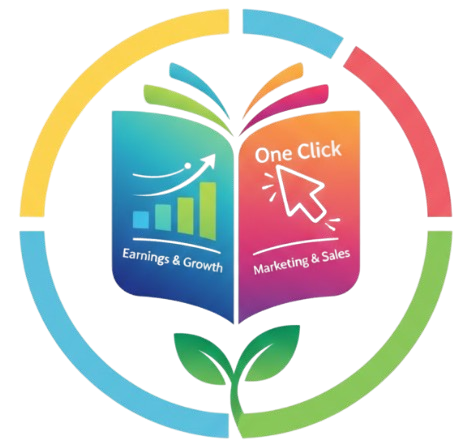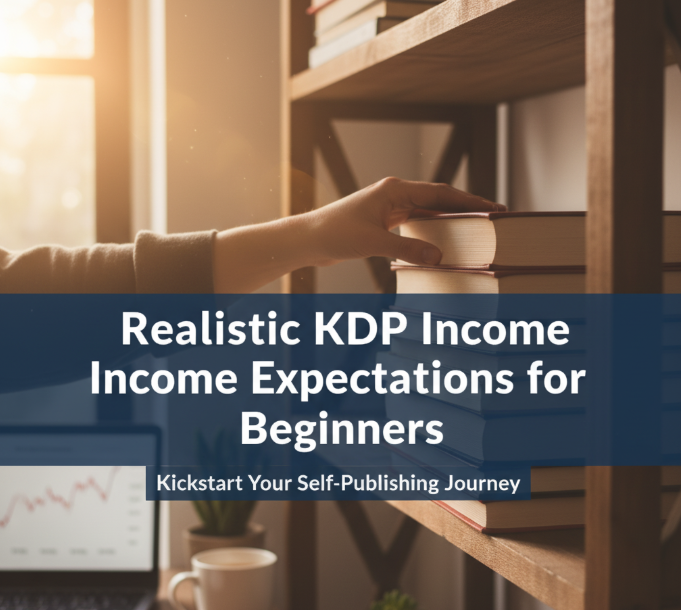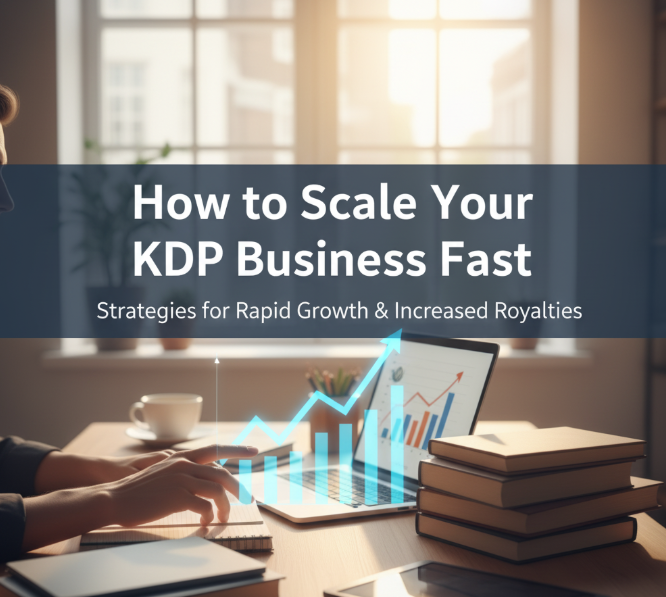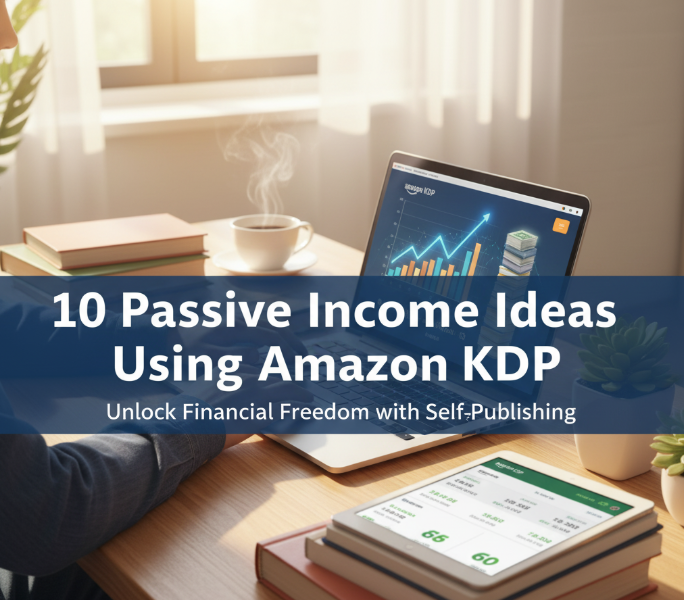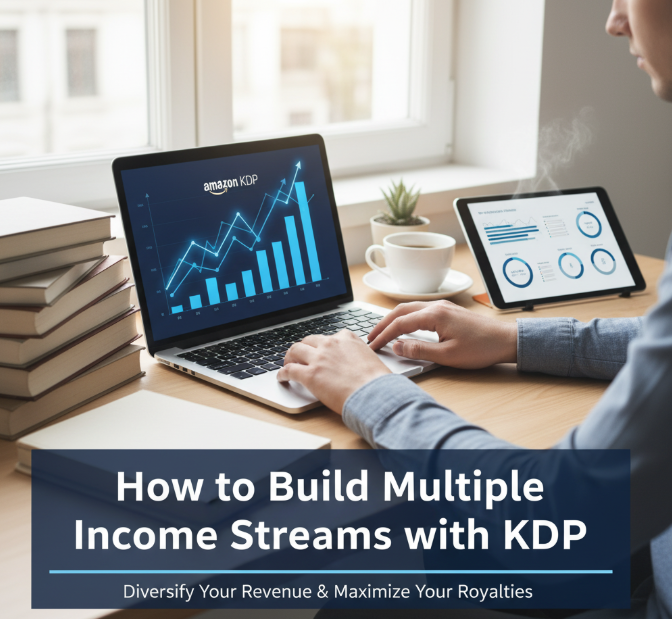If you’ve spent any time on the internet in recent months, you’re likely to have noticed someone bragging about earning $10,000 their first month selling books with Amazon KDP. Perhaps you’ve seen other people post videos or screenshots of their dashboards with large numbers to show off. It looks exciting, right? But here’s the thing: very few beginners earn thousands of dollars from day one, and that is okay.
You can really get paid to publish books on the Amazon Kindle Store with Kindle Direct Publishing (KDP). But success is its own road for each of us. For some, the first sale happens within a couple of days and for others it can take weeks or even months. Knowing what’s realistic can keep you from disappointment, and position you to build a publishing business that is sustainable.
In this guide, we’re going to unpack what newbies can realistically expect to make with KDP, what influences your earnings and how you can position yourself in the best way for evergreen consistent-income success without buying into the hype.
What Amazon KDP Actually Is
Amazon KDP is a free and easy way for authors and publishers to make their books available worldwide on the Kindle and Amazon websites. You don’t need a publisher, and you don’t have to put up front money to begin. You build your book and upload it to Amazon, then set your price, and you’re off to the races.
The draw is obvious: Amazon has millions of customers culling through books each day. Your book is in the world’s biggest bookstore, open 24/7. Your book is purchased by someone, and it’s Amazon who takes care of the printing (when you’re talking physical books), shipping and customer service. You just collect your royalties.
But here’s something many new writers don’t understand: the mere fact that your book is on Amazon doesn’t mean people will know it or buy it. Amazon has millions of books in its catalog. When you want to stand out it takes some strategy, discipline and sometimes trial by error.
The Reality Check – First Month Income
We’ll begin by looking at the harsh reality. In their opening month, a majority of KDP newcomers earn between $0 and $50. Yes, you read that right. Zero dollars is a very popular first-month result and you are not alone if that happens to you.
Here is an overview of the first month experiences for most people:
| Experience Level | Average First Month Range | What This Means |
|---|---|---|
| No experience with 1 book | $0 – $20 | 0-10 sales |
| Beginner with 3-5 books | $20 – $100 | 15-30 sales |
| Beginner with research and strategy | $50 – $250 | 25-90 sales |
| That last figure is if you have an existing audience. | $100 – $750 | 50+ sales |
Why do beginners often have a hard time in the beginning? Several reasons:
Your book has to have time for people to see it. Amazon’s algorithm rewards books with steady sales and positive reviews. What’s more, new books start with zero sales history and will not show up high in search results. Your book doesn’t pick up right away.
Competition is fierce. Depending on your genre, you could be competing against thousands or tens of thousands of other books. It’s a natural advantage when you’re an established author and already have dozens of reviews and sales history.
It’s tougher to market than it looks. Writing a good book is only half the battle. Convincing people to look at it and buy it is a skill many novices don’t possess.
Some trial and error is involved. It could be that your first book isn’t in the right niche, or that your cover doesn’t grab anyone. Every successful KDP publisher I know says they learned with their first several books what not to do.
The Three-Month Reality
Heading into month three, you lose that rose-tinted hue about how much you’re going to be earning over time. Because beginners who hang in there generally make only small gains.
But after three months of concerted effort, here’s what’s realistic:
- Writing and Publishing A Book a Month: $50 – $300 total per month
- Releasing 2-3 a month: $150 – $600 a month total
- 1-4 books published per month with some research: $100 – $300 total monthly earnings
- 4+ books published per month with decent research: $300 – $1,000+ total monthly profits
Notice the pattern? It’s a case of the more books the better, on average at least; quality counts as well, of course. You will not make as much money publishing ten badly researched books as with three well-researched ones in high demand niches.
You are just figuring out what works at this point. You’re experimenting with book types, niches, covers and price points. Some books will flop completely. And others could prove to be steady sellers that might take you by surprise. This period of experimentation is precious even when the money is negligible.
Months 6-12: Gaining Momentum
Enter the world of serious novices here. After six months to a year of steady publishing, your catalog does some work for you. You have books that form a stream of income, and you’re more experienced and can make better decisions.
Attainable income ranges over 6-12 months:
| Publishing Schedule | Publishing Frequency | Typical Monthly Range | Number of Books in Catalog |
|---|---|---|---|
| Casual (1 book/month) | $200 – $800 | 6-12 books | |
| Part-time (2-3 books/month) | $500 – $2,000 | 12-36 books | |
| Serious (4+ books/month) | $1,000 – $5,000+ | 24-60+ books |
The numbers are predicated on you getting better with each book. You’re picking better niches, creating more compelling covers, writing superior descriptions and using keywords in a smart way.
Some publishers reached these numbers sooner. Others take longer. It does, however, depend on your book type and niche, the quality of your books, how much you study this aspect of Kindle Publishing (KDP), etc.
What Affects Your KDP Income
Your book earnings on KDP are not lottery. There are a few things in particular that decide whether you earn $10 or $1,000 per month.
Book Type and Niche
Not all books earn the same. Low-content books (journals, planners) can be easier to create despite facing a ton of competition. You require volume to make decent money. Midrange books (say, short activity-style books or guided journals) exist in the middle. These can take longer to make (surface pattern designs, full-length books) but can also fetch higher prices.
The niche you select matters enormously. There’s no point in publishing a generic journal in an oversaturated category. For me, the sweet spot is finding underserved niches with a decent amount of search volume.

Book Quality and Presentation
Your cover is the first thing potential buyers will see. You can see your sales go up 10X with a professional looking cover, and die the death of a mouse in a lion pit with an amateur looking, cheap image on the cover no matter how good what’s inside is.
As your book description is a sales page. Boring descriptions get ignored. You turn browsers into buyers with compelling descriptions that notably address your target reader’s needs.
The interior quality matters too. You read one with obvious errors, poor formatting and low quality content you most likely give it a bad review. Bad reviews destroy your sales.
Pricing Strategy
If the price is too high, you’ll get few customers. Underprice it and you’ll be earning pennies for each sale, while undermining the value of what you’ve created. I’d say most successful beginners play around with different prices to see what works for their books.
And for ebooks, well, the $2.99 to $4.99 range is a good one because Amazon pays 70% and you the author makes some money. With paperbacks, you have to price high enough to cover the cost of printing and still come out ahead. A $6.99 paperback might net you a dollar or two per sale, after Amazon takes his cut.
Consistency and Catalog Size
It’s seldom the case that you publish something and throw it up in the air, hoping for rainbows to burst out. KDP success comes from having dozens of books making sales. If every book only brings in $20-50/month, you get to $400-1k/month with 20 books.
Consider each book a trickle of cash. The more streams you get, the higher the total revenue you receive. And of course, the more books you have to offer, the higher your chances are that readers will buy more than one of them.
Seasonal Trends
There are a few niches which absolutely explode during specific times of the year. Planners sell best in Q4. Summer activity books are best sellers from late spring into early summer. Holiday-driven books spike ahead of holidays. You get to publish the right books at the right times once you understand these patterns.
Breaking Down the Numbers
Let’s take examples so you can see how this works in real life.
Example 1: The Low-Content Publisher
Sarah writes diaries and activity books. She makes 3 books a month with outsourcing. Her average book sells 15 copies a month at $8.99 (paperback), netting her about $2.50 per sale after Amazon takes its cut.
- 3 books × 15 sales = 45 sales a month
- 45 sales × $2.50 = $112.50 per month on new books
After 6 months: 18 books on list
If you average 10 sales/month on older books: 15 books × 10 × $2.50 = $375
Total for Month 6: $112.50 + $375 = $487.50
Example 2: The Specialist Niche Publisher
James writes in a particular non-fiction niche. He is also one of the movement’s most prolific book publishers: He releases 1 well-researched book per month, for $4.99 (ebook). He sells 40 books a month at a $4.99 sales price (earning about $3.40 per sale — Amazon pays the author/creator/publisher 70% of the sales price).
- 1 book × 40 sales = 40 sales per month
- 40 sales × $3.40 = $136/month on new book
6 months later: Catalog now contains 6 books
Estimated for older books if 30 is the average sales per month: (5 × 30) × $3.40 = $510
Total for Month 6: $136 + $510 = $646
These examples show realistic scenarios. Not everyone will reach these numbers and that’s okay, but with consistent effort and learning, they’re within your grasp.
The Income Timeline Chart
This is what it looks like in terms of real income growth if you are a devoted beginner who releases 2-3 good books every month:
| Month | Books | Monthly Income Range |
|---|---|---|
| 1 | 2-3 | $0 – $50 |
| 2 | 4-6 | $30 – $150 |
| 3 | 6-9 | $80 – $300 |
Remember: This is assuming that you are learning and getting better. If you put something out, without strategy or research, your rates are going to suck.
What Success Actually Looks Like
Redefining success for KDP noobs. If you’re bringing in $500-1,000 a month after 6 months to a year, or however long it takes you to break the barrier of maintenance (generally around that amount), then you are doing great. As much or as little as you want, that’s real money you can use to pay bills, invest or save for something bigger.
Success isn’t about keeping up with the inflated figures you frequently read about online. It’s about:
- Regular (increasing) monthly income
- Discovering a few popular niches that will happily pay you well for writing
- Creating a catalog that will earn money while sleeping
- Growing your design/production/marketing/research chops
- Building effective systems you can scale
It wasn’t an overnight success for the ones making $10,000+ a month. They had spent months or years building their catalogs, trying strategies and in some cases failing on the road to finding the things that worked.
Common Mistakes That Can Destroy Beginner Income
You learn as much from knowing what not to do as what you should do.
Mistake 1: Publishing without research. If you create books on what you like instead of what customers really want, then that’s zero sales. Always research your niche first.
Mistake 2: Expecting instant results. KDP is not a way to get rich quick. It is a trade that requires patience and persistence.
Mistake 3: Ignoring book covers. Your cover should look professional, and be genre-appropriate. The fastest way to kill sales is with a bad cover.
Mistake 4: One and done publishing. One book doesn’t tend to make a whole lot of money. To build momentum you need several volumes.
Mistake 5: Copying others exactly. Getting what worked for someone else may not work for you. Learn fundamentals, but develop your take.
Mistake 6: Throwing in the towel too early. Most beginners give up when their first book fails. The publishers who are making good money are the ones that stuck with it through the learning phase.
How to Position Yourself for Better Results
And although you can’t control everything, you can certainly tilt the odds in your favor.
Invest time in learning. Learn the process of how Amazon’s system works, research your niche, and write books that people want. Free resources and courses are all around you. Use them. For comprehensive information on self-publishing, check out Amazon’s KDP official resources.
Start with lower-competition niches. Don’t go up against proven bestsellers right off the bat. Identify underserved niches where you can get some traction.
Concentrate on quality first, not quantity. It is preferable to publish 2 great books per month than 10 average ones. As you get faster and as you improve, go ahead and ramp it up.
Test and track everything. Keep track of what works and didn’t. Which niches perform best? Which cover styles? Which price points? Use this data to improve.
Be patient but persistent. Give every book at least 90 days to play out before evaluating it. Some books are slow to warm up. Just keep publishing new books while you wait.
Manage your expectations. Go into it under the assumption that your first few months will likely be slow. This attitude will stop you from becoming discouraged and will keep you committed.
The Long-Term Picture
Consider KDP being building a digital asset. You plant a tree with every book you write. Some trees grow quickly, some slowly and some don’t survive. But you eventually have an orchard yielding fruit (income) all year long.
And after 2 short years of regular publishing, a lot of KDP publishers have accumulated 50-100+ books making sales! Several books can, on their own, generate $1,000-5,000 per month. Some books will be losers, of course, but others may surprise you by becoming steady performers.
Publishers making the big bucks ($5,000-10,000/mo and more) typically have:
- Large catalogs (100+ books)
- Years of experience
- Strong understanding of their niches
- Systems for easily generating or outsourcing content
- Diversified revenues (ebooks, paperbacks, hardbacks)
Not to scare you off. It’s a way to help you understand that KDP rewards tactical effort over time.
Should You Still Try KDP?
Regardless of the realistic (sometimes discouraging) income goals, KDP is a great opportunity for the right person.
KDP might be for you if you…
- Can create/commit for at least 6-12 months of regular posts
- Have a flair for the creative or the business of book publishing
- Prefer to create passive income streams over the long term
- Have reasonable expectations about making money
- Can take criticism and times when things don’t work out
You may want to pass if you:
- Need money immediately
- Don’t want to learn the business side
- Easily give up when things don’t happen immediately
- Expect thousands of dollars your first month
- Don’t have the time (and potentially a few dollars for tools or outsourcing) to spend

Realistic KDP Income Expectations for Beginners
Frequently Asked Questions
How much can I expect to earn my first month on KDP?
The majority of newbies earn between $0-$50 in their first month. The reality is some don’t make anything, and that’s okay. Your books need time to build visibility and momentum and regular sales.
What are the costs when publishing via KDP?
Not necessarily, but a budget does make it easier. KDP itself is free, although you may want to budget for cover design or formatting (or research tools). You can begin with free tools and do everything yourself (this takes longer).
How many books do I have to have before I start making good money?
There isn’t a one-size-fits-all answer, but most publishers have to get into the range of 10-20 books before seeing a steady income of $500+ a month. The better books you have, the more chances of sales.
Is it true that KDP is a valid way to earn passive income?
Yes, but “passive” is relative. Once published, your books can sell without any extra work. But you do have to publish new books in order to increase your income. Then you start getting more passive income once you have a little bit of catalog.
What kind of books make the most money for a beginner?
It really depends, but for most starters the money is in planners, journals, activity books and puzzle books or short nonfiction content on focused topics. The trick is to look for niches that have demand but are not totally bludgeoned by competition.
How soon will I make my first sale?
Some publishers score their first sale within days, some stretching into weeks, or even months. It varies depending on your niche, competition, book quality and pricing. If sales start slow, don’t panic.
Should I release ebooks or paperbacks?
Both! Ebooks offer better margins, yet paperbacks have higher perceived value and tend to sell for more. Releasing both types for each book will help you get the most out of your work.
Is KDP worth it in 2025?
Yes, if you treat it as an actual business unto itself that requires time and effort. Even as competition has intensified, Amazon’s customer base is still expanding. It is possible for publishers who take the time to do their homework and make good books, they can still build functioning businesses.
Final Thoughts
Making money from Amazon KDP as a beginner takes time, work, and reasonable expectations. The overnight success stories that you read about online are anomalies, not the norm. Most successful publishers were able to take months or years to build their business book by book.
You might make nothing in the first month. Your first few books could totally tank. That doesn’t mean you’ve failed. It means you are in the learning phase that every successful publisher has to go through.
Concentrate on creating best-sellers in target markets with real demand. Publish consistently. Gain something from each book you publish. Monitor your results and be ready to change your strategy. Stack it up over time and you’ll have a catalog that pays real money.
Will you earn $10,000 in your first month? Almost certainly not. Can you create a business that at the end of the day, generates $1k… $3k or even $5k+ per month? Absolutely. It’s just a longer game than the hype would have you believe.
The question isn’t whether KDP can work for you. What matters is if you’re willing to put in the sustained effort required to make it work. Well if you are, then the odds they’re attempting to overcome will greatly decrease and you stand a real chance at creating something of value.
Start with realistic goals. Celebrate small wins. Keep publishing. Your future self will be grateful you started today.
